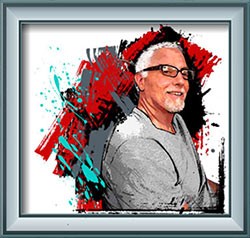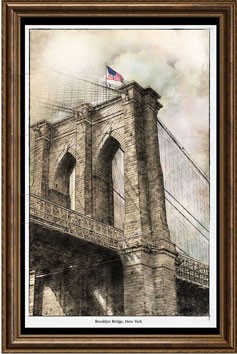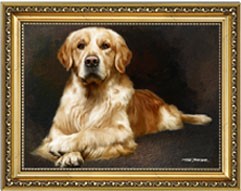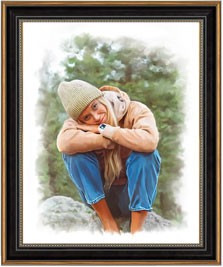About Tom




Tom Baker
546 19th Street, Brooklyn, NY 11218
Contact Tom Baker: tbaker2432@gmail.com
I am both a traditional and digital artist and I find it very difficult to determine what medium I love the most. Digital art has come a long way since its birth and it can now easily compete with traditional art. Being an artist who paints digital portraits which includes some Ocean and City scenes, then turns them into one-off masterpieces by printing and painting over them by hand. I worked for years using traditional paints, pencils, pastels, etc, but I’ve always been fascinated with creating art and graphics on the computer. I’ve played around with digital art since way back, when the software available for art was very simplistic and not capable of what I’d call “professional quality” art. I was fortunate to study under Harold Stevenson who was a student of Norman Rockwell and learn my traditional art techniques from him and ultimately getting commissions to do artwork for some big companies here in NYC.
How I Work!
I usually start my project on paper but sometimes for my main work I will start with a digital sketch drawn on my Wacom Tablet. I then rough in colors, trying to work out the color palette, shadows and highlights, etc. Most of the brushes I use are custom brushes that I have created through much experimentation to mimic traditional mediums in texture and how they apply color to the surface. I think I originally started combining digital and traditional painting because I felt that people did not respect a painting that was done totally digitally. And sometimes I like the quality you can get by painting or drawing over a digital print on paper or canvas with acrylics, pastels, pencil, chalk, etc.
After I’m happy with the rough painting I begin to blend some of the colors, often using a soft, bristly brush that applies a new color with less pressure or blend the colors together if I apply more pressure. I start by working with large brushes and gradually work down to smaller and smaller brushes as I paint more detail. I have the button on my Wacom stylus set to change the brush size so I can constantly and instantly change sizes as I paint with a flick of my finger. I think about what I might want to do later with traditional mediums as I paint digitally so I can leave certain areas flat or even blank to be painted in later with “wet” paint or traditional dry mediums like charcoal/pastels/pencils.
When I am happy with the digital painting I send it off to a really excellent fine art printer that I work with here in New York. She so meticulous in crafting giclée prints that they are artists in their own right. I work very closely with them to get the color accuracy and richness that I saw on my screen. I usually print on beautiful 100% cotton rag acid-free archival fine art paper, but I have printed a few portraits on linen canvas. I will paint in areas with acrylic or gouache or build up parts of the painting using pastel, colored pencil, etc. Thus adding the tactile strokes. Then I finish the painting with several coats of acrylic glaze and there it is! A one of a kind “hand-painted” original, ready for framing and hanging in a gallery!
I honestly can do anything digitally that I can do with traditional tools and I’m looking forward to the day when the art buying public accepts digital art as equal to traditionally painted art. It happened with digital photography versus film photography and I think it will also happen with art eventually.
But another challenge, and this is actually kind of a happy one, is managing the completely unlimited options I have when painting digitally. Because I can literally do anything digitally that I can do with traditional paint AND also achieve many things that are completely impossible in the “real” world, the possibilities are ENDLESS. Having endless options at my fingertips makes me want to play for hours. Sometimes, I feel I could go on forever experimenting with all the tools and settings and trying out different ideas that pop into my head when I’m painting digitally. But then I would never finish the piece!! So I often have to pull myself back to reality and focus on just one path on which to proceed to build and finish a painting.
4 EASY STEPS TO COMMISSION A PORTAIT!
1. I help you decide on a photo and the file size needed for the Portrait.
2. You will then receive a quote based on the canvas size and details in the painting.
3. A 50% deposit is required to begin. I will send you progress emails where you will be able to request changes, both after the initial sketch, and after the first layer of paint.
4. Once you are happy with the final design, the painting is varnished and dried. I then carefully and beautifully package your work for safe shipping across town or across the globe!
GETTING ADDITIONAL SIZES FOR FRIENDS AND FAMILY
The beauty of Digital Painting is I can offer you other sizes once the painting is done an approved! These can be used for Friends and family. Small paintins and even greeting cards.
Hope to hear for you, peace!
